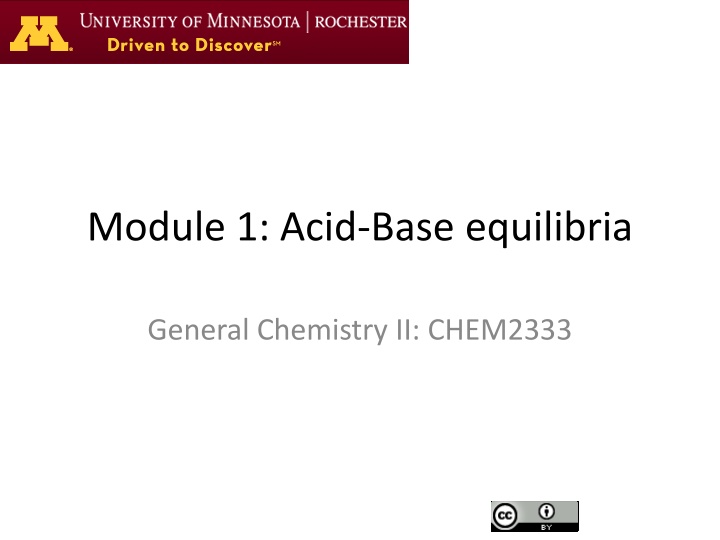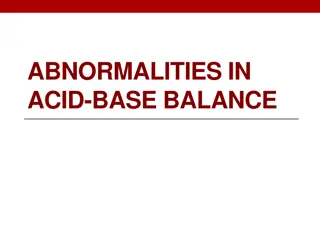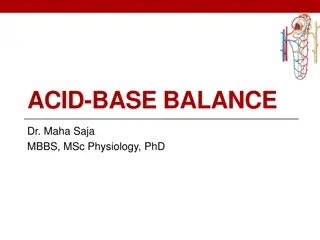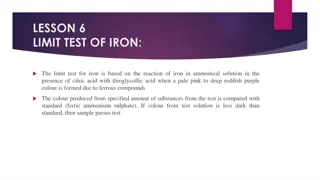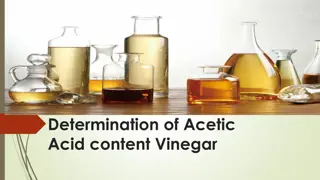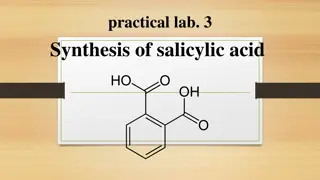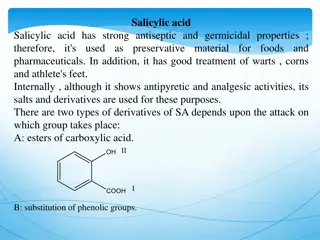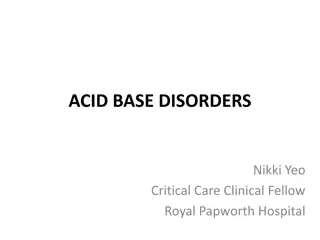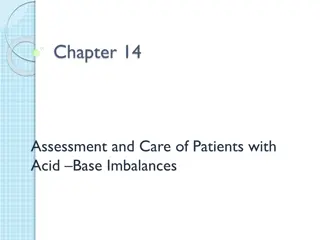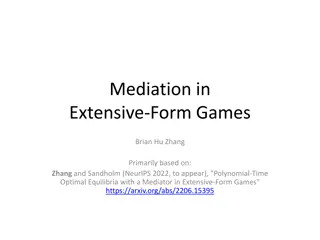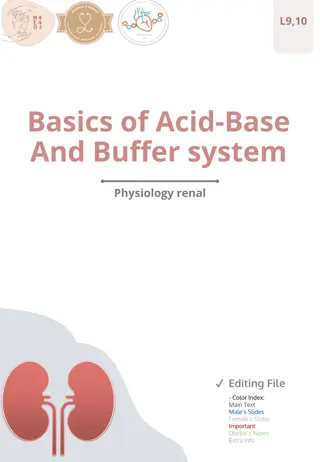Module 1: Acid-Base equilibria
The concepts of acid-base equilibria, buffer solutions, pH control, and buffer preparation in Chemistry. Learn about the biological relevance of buffers, different buffer systems, and characteristics of buffers. Dive into understanding concentrations in buffer solutions and the dissociation of acids at various pH levels.
Download Presentation

Please find below an Image/Link to download the presentation.
The content on the website is provided AS IS for your information and personal use only. It may not be sold, licensed, or shared on other websites without obtaining consent from the author.If you encounter any issues during the download, it is possible that the publisher has removed the file from their server.
You are allowed to download the files provided on this website for personal or commercial use, subject to the condition that they are used lawfully. All files are the property of their respective owners.
The content on the website is provided AS IS for your information and personal use only. It may not be sold, licensed, or shared on other websites without obtaining consent from the author.
E N D
Presentation Transcript
Module 1: Acid-Base equilibria General Chemistry II: CHEM2333
Module 1 Module 1 Session 5 1. Video 1: How to prepare a buffer 1. By transforming half of the weak acid into its conjugate base 2. By transforming half of the weak base into its conjugate acid 3. By mixing an acid and its conjugate base (they don t react) 1. Video 2: concentrations in a buffer 1. Capacity of a buffer depends on absolute concentration 2. The capacity of the buffer is maximum when [A-] = [HA] 3. Overwhelming or destroying a buffer 1. Video 3: Characteristics of buffers 1. pH of a buffer solution does not depend on absolute concentration but relative concentration 2. pH of a buffer after adding an acid 3. pH of a buffer after adding a base Chem 2333: General Chemistry II 2
Buffers The biological relevance of buffers A blood pH below 7 or higher than 7.8 results in death HCO3(-) CO3(2-) CO2/H2CO3 The pH of the cell changes the protonation state of molecules and biomolecules. Changing completely their physical and chemical properties (solubility, reactivity) The pH is kept constant by a buffer A buffer is a solution that lessens the impact on pH from adding acid or base. A buffer is usually composed by similar concentrations of the conjugate acid-base pair of a weak acid They act by neutralizing the added acid or base. When small amounts of OH- or H3O+ are added a small amount of one buffer component will convert into the other. Chem 2333: General Chemistry II 3
Preparing a buffer Identify which of the following solutions will make a buffer. For those that give a buffer, give the species in solution and an approximate pH 10 mL 0.5M NH3 + 5mL 0.5M NaOH 10 mL 0.2M NaH2PO4 + 10mL 0.1M HCl Phosphoric acid: pKa1 = 2.148, pKa2 = 7.198, pKa3 = 12.319 Chem 2333: General Chemistry II 4
Preparing a buffer 10 mL 0.2M NaH2PO4 + 10mL 0.1M NaOH 10 mL 0.1M HNO3 + 10 mL 0.05M KOH 10 mL 0.1M CH3COOH + 5 mL 0.1M CH3COONa Chem 2333: General Chemistry II 5
Concentrations in a buffer A buffer solution of ammonia/ammonium ion has a pH=8. Is there more ammonia or more ammonium ion in solution? Why? (pKb of ammonia is 4.5) Chem 2333: General Chemistry II 6
Concentrations in a buffer What percentage of acetic acid is dissociated at pH=6? pKa=4.5 Chem 2333: General Chemistry II 7
Characteristics of a buffer Two buffers are prepared: (Carbonic acid has two pKa = 6.3 and 10.3) 1) 100 mL 0.5M HCO3- + 100 mL CO3(2-) 0.5M 2) 100 mL 0.2M HCO3- + 100 mL CO3(2-) 0.2M If we progressively add strong acid to both solutions. What solution will hold the pH longer? What is the pH after adding 0.01 moles of acid? How much acid does one need to add to destroy the weakest buffer? Chem 2333: General Chemistry II 8
Characteristics of a buffer Chem 2333: General Chemistry II 9
